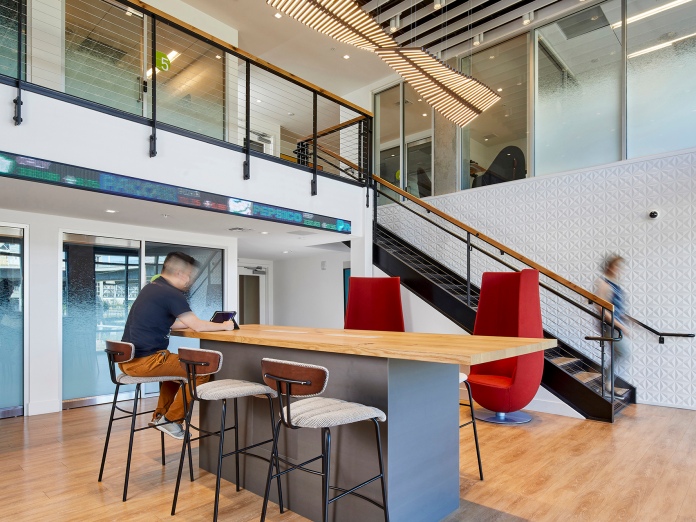Designers and developers foretell the forces that are most likely to drive multifamily activity in 2020.
With the darkest days of COVID behind us, apartment investors have reason to be optimistic.
According to a study commissioned by the National Apartment Association and National Multifamily Housing Council and conducted by Hoyt Advisory Services, the U.S. will need to build at least 4.6 million new apartment homes at all price points by 2030.
In addition, as many as 11.7 million older existing apartments could need renovation during the same period. Here are the key trends that will shape new multifamily investment and development in the coming year.
Back to the City
Despite concerns and the extension of work from home for many, big cities are once again attracting renters who crave social interaction, culture and entertainment.
“In Chicago, people have moved back to the city. So as COVID disappears, we’re returning to normal,” explained Craig Pryde AIA, LEED AP, principal, KTGY. “I think there’s still going to be growth in the urban cores, and we’ll see people wanting to move closer to the activities zone. It is definitely still a trend that people are renting well into their 30s before they start thinking about home ownership.”
Meanwhile, suburbanites will also seek the walkable work/live/play lifestyle (also known as the 15-minute city) in surrounding areas as well.
Lending Volumes Rise
The Mortgage Bankers Association anticipates increases in lending volumes in 2022, with activity rising to $597 billion in commercial/multifamily mortgage bankers originations and $421 billion in total multifamily lending.
“Commercial and multifamily real estate markets are moving past the pain that the COVID-19 pandemic caused in 2020,” said Jamie Woodwell, vice president for commercial real estate research, MBA. “There remain significant differences by property type, but incomes have rebounded strongly and investor interest in real estate and real estate finance is robust.”
The result is expected to be strong property appreciation and increased transaction activity, both of which is fueling financings.
“If you look at property fundamentals the vacancy rate is at, or near, lows we haven’t seen since the mid-’80s,” said Woodwell.
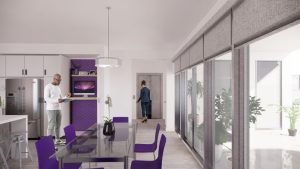
Focus on Existing Assets
Factors such as COVID, work from home, migration to the suburbs, the tight labor market, rising construction costs, and supply chain issues all suggest a continued focus on existing multifamily deals.
“Whether big or small, Class A, B or C, the risk is taken down several notches,” said Marty Zupancic, senior vice president of investments at Marcus & Millichap | The Zupancic Group. “I see, in particular, value-add deals, workforce housing and affordable product being super-hot throughout 2022.”
As the economy continues to come back, Zupancic anticipates that Class A and A- product built in the last 10 years will continue to achieve strong pricing.
An Appetite for Redevelopment 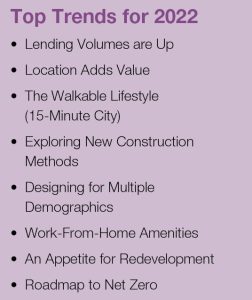 The decline of regional malls, accelerated by continue to create interesting multifamily
The decline of regional malls, accelerated by continue to create interesting multifamily
redevelopment opportunities in 2022. “In some cases, these malls were some of the best-located pieces of land within a community that have now become defunct,” said Rick Barrett, founder & CEO of Barrett Lo Visionary Development. “Public-private partnerships between a developer and a municipality can transform these projects into gems of their community. ”Another multifamily redevelopment opportunity that may take off in 2022 involves office buildings that are experiencing increased vacancy.
“You’re buying into a product that already exists and you’re taking lots of risk off the table,” said Zupancic. “I’m also hearing from multiple sources about older or failed hotels that are great for affordable housing. I see that as another adaptive reuse trend.”
According to Yardi Matrix data, a record 20,100 apartment conversions were to be finalized in 2021, and a total of 32,000 in the first two years of the decade. Philadelphia and Washington, D.C., have converted the most units in 2020 and 2021 combined, while Los Angeles and Cleveland have the most projects lined up beginning in 2022.
New Construction Methods
Despite the many potential setbacks facing developers, there are more multifamily units currently under construction than any time since the mid-’70s, according to the MBA, and discussions will widen in 2022 about how multifamily projects are built and which materials work best.
Architectural features that redirect sunlight and lower energy costs will be incorporated into facades. Prefabricated and modular designs can accommodate architectural aesthetics like building offsets, angled walls, balconies, pitched roofs and more. In a well-designed structure, it can be impossible to tell that prefabrication was used.
KTGY has a number of West Coast modular projects under construction and in design including the shipping-container style of modularization. Wood is also well-suited for prefabricated and modular construction because it is lightweight and easily transported, strong, straightforward to engineer, energy-efficient and durable.
“The module has to be a size that can be transported from wherever it’s built to wherever it’s put up on site,” explained Craig Pryde. “That is becoming a real factor in certain markets because the time to finish construction of a structure is definitely shorter.”
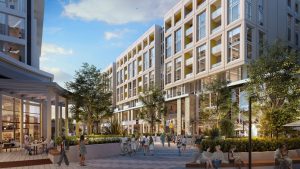
Preparing for Next-Gen Renters
It’s never too soon to start researching what the next cohort of apartment renters will want, and 2022 will feature more conversations on this topic.
Generation Alpha (also known as Gen Alpha) is the demographic cohort after Generation Z. Born between the early 2010s and the mid-2020s, Gen Alpha are primarily the children of Millennials. They are the first to be born entirely in the 21st century.
Work-From-Home Amenities
COVID will make apartment residents more aware of the quality of the built environment and cause them to look for apartment homes that protect their wellness. Developers and operators, therefore, will look to programs like LEED, WELL and Fitwel to certify that their projects have physical and mental health in mind. State-of-the-art HVAC and filtration systems plus floorplans that include outdoor terraces and balconies will be in demand.
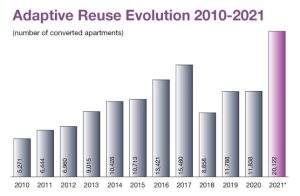
“Continuing forward, a lot of our units are increasing in size slightly to provide some form of an opportunity to work from home within the unit—that’s providing a space for a desk, a niche or an extension of a countertop,” said Pryde.
Roadmap to Net Zero
In 2022, more investors will make robust efforts toward decarbonization.
“Never before has the real estate industry seen more pressure and more opportunity around net zero,” said Marta Schantz, senior vice president, at ULI Greenprint Center for Building Performance.
ULI recently launched the Net Zero Imperative, a multiyear initiative to accelerate decarbonization in the built environment. The program is designed to help building owners, cities and other relevant constituents reduce carbon emissions.
Residents, too, are seeking apartments that match their values and sustainable goals.
“Take advantage of vacancy during resident turnover to slowly, over time make changes across the units to improve sustainability,” said Schantz.
The Wildcards
One wildcard that investors are keeping a watchful eye on, when deciding which markets will yield the greatest return on investment in 2022, is the effect of regional government regulations.
Meanwhile interest rates are expected to rise in 2022. The question is by how much. Still-favorable borrowing rates, combined with an ongoing shortage of single-family homes for sale, however, are expected to create sustained market demand for multifamily units.
There’s never been a more creative time for multifamily developers. Anticipating what will capture the market has always been a challenge, but it’s become much more of a moving target.
Today’s renters are able to customize everything from their shoes to their coffee so they definitely don’t want to live in a cookie-cutter apartment community. Savvy developers are striving for differentiation with interiors that delight prospects and convert them to residents. MHN spoke to three top designers to find out what’s hot now in the spaces renters call home.
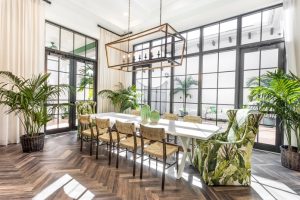
Curating Instagram Moments
One of the biggest shifts in the last couple of years has been multifamily interiors taking a similar approach to hospitality design by incorporating storytelling and intentional instagram moments in public areas, according to Holly Nixon, design director at V Starr, the South Fla.-based interior design firm owned by Venus Williams. Williams founded V Starr in 2002. Her firm specializes in commercial design with a focus on multifamily and hospitality projects.
As the architecture of the building is conceptualized, the V Starr team goes through their own discovery process. “We research the location, the demographics and if there’s anything special in the area that we can start pulling a story from,” says Nixon. “If we are in an area where there is no major history or major landmark, we pull from a broader research component to create our own story.”
This becomes the foundation for a highly curated palette of furniture, finishes and art.
V Starr’s interior design approach always considers the entire building for a cohesive look that does not go unnoticed by prospects during lease-up. In one particular project the V Starr team strongly suggested to their client that the window frames be black rather than the originally planned anodized aluminum color.
“That was largely because of the story that we were putting together for the interior design which referenced the exterior of the building,” says Nixon.
In multifamily public space, Nixon is seeing a need for more flexible living space with options for working as well as relaxation.
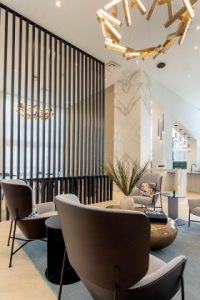
“There needs to be a lot of space in the amenities that allows residents to break out in a smaller group or larger groups as well. Flexibility for compression and decompression is a big functional concern,” adds Nixon. “Units keep getting smaller and more people are working from home. Within apartment units, closets are being reconfigured to incorporate a desking area,” she adds.
In terms of tonalities and colors in cabinetry, flooring and other fixed elements, Nixon is seeing a shift back to light wood tones—like white oaks and walnuts—and clean Scandinavian style. Modern farmhouse/rustic and industrial are going to be on their way out, because it all starts to look the same, predicts Nixon.
V Starr is leading clients toward finishes that are more organic and a little bit softer. “Apartment residents are craving a calming palette tied to simplicity and nature,” said Nixon. “We’ve all been stuck in our homes and now we want everything to be lighter and brighter. The market right now is dictating cleaner, lighter, whiter, brighter spaces so that residents can work their own furniture into apartment homes.”
The white-on-white palette for walls, cabinets and other finishes continues to be popular. Nixon adds that granite is still out. Engineered quartz countertops are preferable for their style options as well as ease of maintenance, staining and antimicrobial properties.
In amenity spaces and model apartments, textures like plasters and grass cloth and even boucles are coming back in, but in neutral tones. The bold use of color accents and dramatic furniture features—or abstract art in a really bright color—can create character in a more neutral backdrop.
“It’s really interesting to see yellow making a comeback,” said Nixon. “It was the Pantone Color of the Year for 2021, and now we’re starting to see it come through in some projects and products. We’re also seeing a lot of calming green tones like deep sage as well as dynamic turquoise greens.”
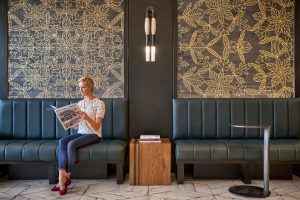
Art and Customization
Interior designers have always blended art into multifamily projects, but today’s art goes beyond decorating. Custom art inspired by the neighborhood’s character and history—and created by local talent—results in authentic spaces that captivate prospects.
Washington, D.C.-based Hickok Cole infuses art into all their projects. “We’ll customize anything and everything: wall graphics, lighting, furniture, rugs, art, sculptures and murals—each project is truly unique and brings new opportunities to push fabrication and craftsmanship,” said Tammy Lippman, senior associate and senior interior designer, Hickok Cole.
“We custom fabricate for a myriad of reasons,” added Lippman. “Often, it’s because we need a piece to fit a particular space or shape. And there are certain pieces that make more sense to customize rather than buying off the shelf like specialty lighting or finishes. We have more power to weave in elements from the brand or design concept that make it more personal to the project.”
For their adaptive reuse project The Batley, Hickok Cole’s design concept “Urban Farm” was based on the development’s location in the NoMa neighborhood of Washington, D.C., which once served as a primary marketplace for the community.
They incorporated several salvaged pieces from the original building structure into the new design, including cabinets transformed into a work of art and wooden shelving repurposed as paneling in the elevator corridors. Because of the neighborhood’s current reputation as D.C.’s mural capital, they commissioned artist Vero Rivera to design a wheat-inspired mural featured in both the entrance and fitness center.
“In a competitive marketplace, like the D.C. region, differentiation is key and something our clients very much appreciate,” said Lippman.
By incorporating custom elements—whether they be artwork or furniture—we’re creating multiple touch points with potential residents and multiple opportunities to resonate with the brand,” says Lippman.
It provides a tangible, memorable element that prospects can easily recall and connect with, especially if they’re touring many apartment communities.
Also, having a connection to small business and forming relationships within the community is incredibly special in a large urban environment.
“We find that local touch appeals to residents as well, especially as rising generations become more conscious of their purchases,” added Lippman “The incorporation of interior and exterior murals is almost a standard at this point throughout the city. It brings a new soul to the neighborhood. Most of our local muralists are very busy and in high demand. That’s a trend I’m confident will remain for the long run.”
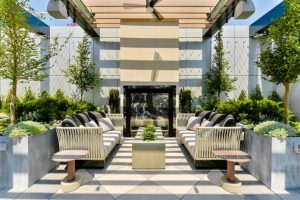
Luxury Finishes for All
Mid-century interiors are hot. So are spaces with biophilic elements that demonstrate a developer’s commitment to wellness. Knowing when, where and how to apply elements that are on trend (and when to steer clear) is a specialized skill, designers say.
Rottet Studio recently completed high-end amenity spaces for The Sudbury Residences condominium in Boston, part of Bulfinch Crossing, a new 2.3 million square-foot mixed-use development encompassing multiple office and residential buildings. Rottet Studio was inspired by the iconic architecture of Boston’s Museum of Fine Arts and the Isabella Stewart Gardner Museum.
“We married traditional details with classic finishes including marble, white oak and leather panels to create elegant spaces that are rooted in history but totally modern,” says architect and interior designer Lauren Rottet, FAIA, FIIDA, principal, Rottet Studio. The lobby is accessorized with a sophisticated and timeless brass chandelier and marble fireplace.
Rottet Studio sourced condo quality finishes for The Sudbury Residences. But developers can also achieve luxe interiors on a more modest budget, thanks to new manufacturing technology that brings prices down. In terms of trends to watch now, Rottet anticipates more “architectural” spaces that feel amazing in terms of volume and form, even if they have no finish at all.
“Basically, the drywall walls are sculpted with light and articulation, translating plain into artful. It saves money on finishes too, if the space is beautiful raw with little decoration needed,” explained Rottet.
She also forecasts more light-filled and open spaces where apartment residents feel connected with outdoors.
“Everyone loves a gorgeous wall,” adds Rottet, who has been seeing more outside the box regarding finishes. She suggests using ceramic and porcelain tile patterns in a bold and unpredictable way like covering the whole wall up to the ceiling and maybe even on the ceiling partially.
“This is an easy way to get a ‘big’ look and it is highly durable,” she said. “Think white on white or black on black texture and pattern—or go bold with one or two of those dreamy ‘new’ colors which are really colors (reintroduced) from the 1940s.”
Rottet adds, “I am not talking about just a small backsplash. This will have little effect and is too predictable.”
Creative and unexpected placement of finishes is the key to the differentiation developers and renters both crave. Laminated glass (the ones with metal and/or a textured material embedded) are another option for walls that creates a lovely reflectivity and is also durable and easily cleanable.
Rottet also suggests it’s time to explore carpet again: “Do not settle for just oak flooring. New technologies in carpet manufacturing have made it possible to create stunning patterns and designs that are one-of-a-kind and expressive. They can be highly customized to the rooms or corridors and thus look bespoke to the property.”
According to Rottet, interior design elements on their way out include the muddy brown colors seen in the 1970s. “At least I hope they are on the way out,” she added. “They seemed to creep into many multifamily lobbies, kitchens and bathrooms built in 2019 to the early 2020s.” Rottet views this as a superficial attempt to be “earthy” and natural. She warns against fake “green/sustainable” which she defines as the look of being earthy and natural, but not really being healthy at all and not providing enough natural ventilation and/or light.























![Green Building Materials Market Trends [2023-2030]](https://housingcable.ng/wp-content/uploads/2022/04/csrgreen-building_Cisco_04222022-218x150.png)
